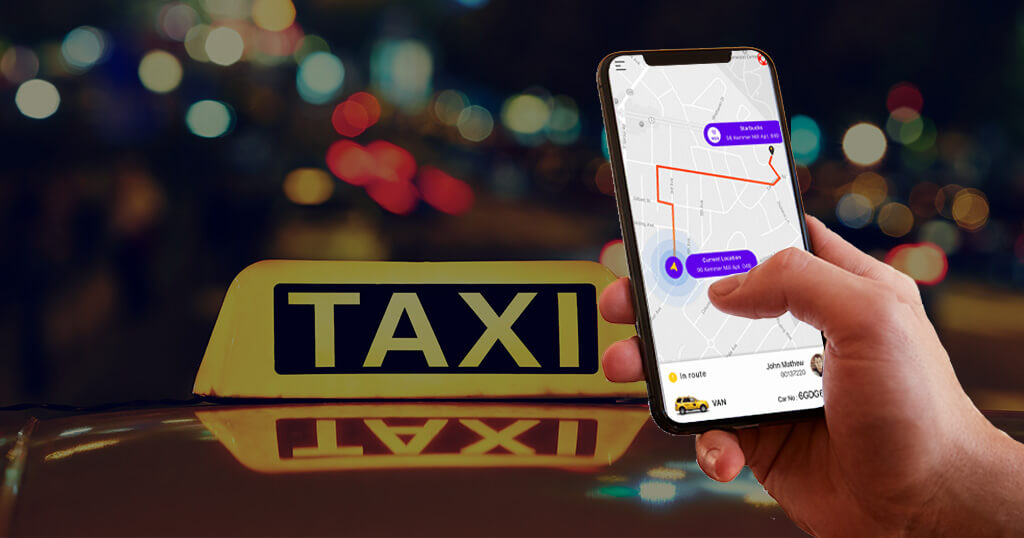In today’s ever-evolving world, the realm of urban mobility is undergoing a remarkable transformation. One particular sector that is experiencing a significant shift is taxi services.
Gone are the days of waving frantically for a yellow cab on the bustling city streets. The advent of new technologies and innovative business models has ushered in a new era of convenience and efficiency, revolutionizing the way people move within cities.
This article delves into the exciting landscape of the transformed taxi services, exploring how these changes are reshaping our urban mobility experience and the implications they have for both passengers and providers alike. Step into this journey with us as we navigate the ever-changing terrain of urban mobility!
The Rise of Ride-Sharing: Uber, Lyft, and the Disruption of Traditional Taxi Services
The rise of ride-sharing services like Uber and Lyft has undoubtedly disrupted traditional taxi services, revolutionizing the way people navigate urban mobility. These innovative platforms have seamlessly integrated technology with transportation, offering users convenience, affordability, and reliability.
With just a few taps on their smartphones, passengers can now easily request a ride and expect a prompt pickup. This new age of urban mobility has challenged the long-standing dominance of traditional taxis, forcing them to adapt or face oblivion.
As cities around the world embrace this transformation, the battle for market share intensifies, leaving regulators grappling to strike a balance between innovation and public safety. The competition between ride-sharing giants and traditional taxis continues to shape the landscape of urban transportation, creating a dynamic and ever-evolving ecosystem for commuters.
Technology and Innovation: How App-Based Services are Transforming the Taxi Industry

The taxi industry has undergone a remarkable transformation with the advent of app-based services, revolutionizing the way we navigate through urban spaces. Technology and innovation have paved the way for a more convenient and efficient experience, allowing customers to order a ride with just a few taps on their smartphones.
These app-based services have not only disrupted the traditional taxi model but also provided significant benefits for both passengers and drivers alike. With real-time GPS tracking, advanced route optimization, and seamless payment options, customers now enjoy a streamlined and hassle-free transportation experience. Simultaneously, drivers can maximize their earnings and reduce idle time through the optimization algorithms embedded within these apps.
As this technological revolution continues to evolve, it will undoubtedly shape the future of urban mobility, offering unique opportunities and challenges for the taxi industry.
Regulation and Legislation: Adapting Policies to the New Age of Urban Mobility
As the realm of urban mobility evolves at a rapid pace, governing bodies worldwide find themselves facing the formidable task of shaping regulations and legislation to keep pace with the changing landscape. The transformation of taxi services, driven by technological advancements and the rise of ride-hailing companies, necessitates a comprehensive reconsideration of existing policies.
The convergence of traditional taxi operators with new digital platforms brings about an array of challenges and opportunities that demand careful and forward-thinking regulation. Balancing the interests of both traditional service providers and disruptive newcomers requires delicate navigation through the ever-changing terrain of urban mobility.
Policymakers must engage in thoughtful dialogue, incorporating diverse perspectives, to craft innovative regulations that promote safety, equity, and efficiency in this new era. Future-oriented policies, equipped to address emerging issues such as congestion, privacy, and data security, will define how cities harness the potential of urban mobility while ensuring a harmonious coexistence between various industry stakeholders.
Effective regulation and legislation must strike the right balance between fostering innovation and protecting public welfare, laying the foundation for a sustainable and inclusive urban mobility ecosystem.
The Evolving Role of Taxis: From Traditional Cabs to Multi-Modal Transportation Providers

The role of taxis has undergone a remarkable transformation in recent years, evolving beyond traditional cab services to become multi-modal transportation providers. In today’s age of urban mobility, taxis have adapted to meet the changing needs and demands of commuters.
They have diversified their services to offer not only conventional passenger pick-ups and drop-offs but also to incorporate a range of new modes of transportation. From ride-hailing platforms to electric and autonomous vehicles, taxis have embraced innovative technologies and mobility solutions to revamp their operations. This transformative shift has revolutionized urban transportation, introducing more convenient, efficient, and sustainable options for commuters while enriching the city’s transportation ecosystem.
With each passing day, taxis are reshaping themselves to cater to the ever-evolving mobility landscape, ensuring that they remain an integral part of the urban transportation fabric.
The Customer Experience: Convenience, Efficiency, and Personalization in the New Era
In the new era of urban mobility, customer experience has become paramount for taxi services. Convenience, efficiency, and personalization are the key elements that shape the evolving landscape.
With the advent of technology, taxi services have transformed, aiming to cater to the ever-changing needs and demands of their riders. Convenience takes center stage as customers expect seamless booking and payment processes, with the ability to track their rides in real time.
Efficiency is paramount, with customers seeking quick response times and optimal routes. Moreover, personalization plays a vital role in enhancing the customer journey, with tailored recommendations based on preferences and past interactions.
As the urban mobility industry evolves, taxi services are embracing these aspects to provide a customer experience that goes beyond just transportation.
Conclusion

In conclusion, the emergence of ride-hailing platforms and the progressive shift towards shared mobility have undoubtedly transformed the landscape of taxi services in the modern age of urban mobility. As technology continues to advance, passengers now have access to more convenient and personalized transportation options.
Traditional taxis have undergone significant changes to remain competitive in this new era, embracing digital platforms and integrating innovative features to enhance user experience. However, taxi services need to adapt to these transformations and focus on the areas where they can excel, such as providing professional drivers, an extensive fleet, and a reliable service.
While click here to book a ride today and experience the convenience of modern urban transportation, it is also crucial for traditional taxi services to continuously innovate and meet the evolving needs of customers to thrive in this ever-changing industry.







